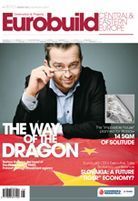In their work some of them are very close to the real estate industry, others have nothing to do with it. Nevertheless, they all are concerned about the changes - negative or positive - in their surroundings and want to send out the message that architecture and real estate are not areas exclusively reserved for those working in these fields. The end-users of the product should also be more interested and involved in the transformation processes that CEE cities are currently going through. Or as one of the bloggers who appears in this article puts it: "When it comes to society, it would be nice to change the popular notion that the public can't influence the alteration of its living environment, that somebody else - government, businessmen, architects and planners - are the ones to decide. There are also other myths, such as 'contemporary architecture can only ruin the natural beauty of the environment or heritage-protected cityscapes' or 'contemporary architecture is expensive, ugly a






























































